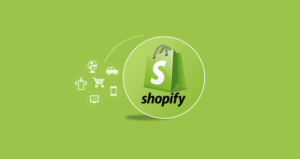
Shopify is popular due to its low startup cost and easy-to-use interface. It’s possible to run a complete online store for as low as $29/month, and you can have everything online in less than a week!
Shopify is an excellent solution for many merchants, though it’s not perfect. Keep reading for more information about what comes included in a Shopify subscription, the merits and disadvantages of the software, and how to set up a Shopify store.
Signing up is very simple and Shopify gives you a 14-days free trial period. Thus, vendors can test this area to see if the platform is correct. All Shopify templates can be customized with images, logos, texts and videos to complete the look of your brand. Once your theme is selected, you can start selling with the platform’s built-in shopping carts. (CLICK HERE for Getting 14-days free trial period !!!)
Shopify integrates over 70 payment gateways with check-outs in over 50 languages (such as Stripe, Paypal, etc.), making it easy to sell your products to customers from all over the world. Thanks to easy store and content management tools and a complete marketing package with multiple features like abandonment cart and search engine optimization, it is not surprising that many businesses use this platform to get their products.
What Are The Pros & Cons Of Shopify?
As you may expect, while Shopify is an excellent option for many merchants, it isn’t for everyone. Here’s a brief list of the reasons merchants choose Shopify, followed by a list of common customer complaints.
Pros
- Easy To Use: This is by far the biggest reason merchants love Shopify. Shopify is built for the technically illiterate. It’s simple to add products, create discounts, and process orders. Web design is user-friendly — and even easy — with the new drag-and-drop editing tool.
- Beautiful and Amazing Themes: Subscribing merchants can choose from a variety of free, mobile responsive themes. Premium (paid) themes are also available for merchants who want more options.
- Low Startup Cost: Shopify’s relatively low monthly fees make setup affordable. How much does Shopify cost, you ask? The basic plan costs $29/month and the mid-level plan is priced at $79/month.
- Good For Dropshippers: Shopify is the platform of choice for many dropshippers. Integrations with Ordoro and Oberlo make dropshipping from your Shopify admin a lot simpler.
- Lots Of Support Options: You can access technical support every hour of the day through phone, live chat, or email. Self-help options are available as well. Customers like that support is available outside of regular business hours.
- 14-days free trial period
Cons
- Limited Functionality: Shopify comes pre-loaded with almost all of the features smaller merchants need to build an online store. However, every business has some specialized requirements, and Shopify typically does not have the features to meet those specific needs. This is where add-ons come in. Many merchants end up needing to purchase a handful of add-ons to make this shopping cart work the way they need it to.
- You cannot create themes as you want, because free themes are too few and paid themes are expensive.
- You have to pay 29 dollars a month.
- Transaction Fees: Although most shopping carts have dropped their transaction fees entirely, Shopify has retained their 0.5% to 2.0% fees (depending on your pricing plan).
- Strained Customer Support: While in the past Shopify has been known for responsive customer support, it seems their support team has experienced increased strain this past year. Shopify’s client load is increasing exponentially, and support is struggling to keep up. Hold times of up to thirty minutes are not uncommon.
- You have to pay 29 dollars a month even if you don’t have sales.
What can I sell on Shopify?
You can sell anything you want. You can find products from anywhere and add them to your Shopify store easily because of the majority will do dropshipping. (Sign up now to start selling on Shopify)
Drop shipping is a supply chain management method in which the retailer does not keep goods in stock but instead transfers the customer orders and shipment details to either the manufacturer, another retailer, or a wholesaler, who then ships the goods directly to the customer. You can start right away without products or a budget.
Here is how the process works:
You can create an online store in any niche you want. I would start with a niche that I know. For example, if you have a hobby and you know the best products that people use on that hobby, you can start with that because you have already an advantage over your competitors.
Once, you have chosen a niche, you need a drop shipper. A good idea would be to stick with the recommendation of Shopify.
How To Find Products For Your Store
Usually, people look for the best selling products or the hot product of a niche.
It makes sense that when people want to buy a product, you have more chances to sell it. So, you can start finding the best products.
You can find your products on Aliexpress. If the supplier sells it to $1, you will sell it to $3. The customer will come to your site and pay for it. You pay directly to the supplier and transfer the customer’s information to him. Thus, the product is shipped to your customer without even touching the product.
That’s it. Sign up now to get started with Shopify!